Small Business Spotlight:
As overland travel and vanlife become more popular, DIY owners and new camper manufacturers are popping up every day looking for better products, more reliable solutions, and the brands with the best overall value. This is also true with van and camper windows, doors, and hatches. Their utility is wide-reaching, including bed boxes, windows in a Sprinter, or a high-quality security door on an expedition camper. One of the fastest-growing and best-regarded brands for these products is Tern Overland, an employee-owned company that is run by the wife and husband team of Aimee and David Soza. Their offices are also located in Prescott, so we have had the opportunity to see their product in person and learn more about their experience. This interview format is a way to help the community become aware of small businesses in the industry and learn more about their products.
Most interesting is David’s long career as an engineer and overlander, including his participation in one of the early Fourwheeler Top Truck Challenges. He won the best engineering award. This is also reflected in his products, which include the doors and windows shown here, but also elaborate vehicle conversions and bespoke builds. I spent some time with David and asked him a few questions about his products and what applications for which they are best suited. ternoverland.com
Scott: Tell me more about the quality and purpose behind your windows and doors?
David: Our products have been extensively tested on roads around the world, and in the Australian Outback. They are a mid-priced option, with cheap domestic and foreign products at the bottom, and über high-end German or Dutch windows at the top. The European options, however, are 3 to 5 times the cost, and many claimed advantages are up for debate. On a value basis, Tern Products are by far the most for the money, and many features are (in our opinion) superior. Here is one reason our products stand alone: Our manufacturer is in China, but the components used to build these products are sourced from the best suppliers from around the world. We do what the Chinese do well in China, but if better products are out there, our manufacturer seeks them out. Examples: Our acrylic glazings are made of genuine Lucite Perspex, made by a top European glazing manufacturer. The powder used in our powder-coating process is AkzoNobel Interpon, imported from the Netherlands. The latches and lock mechanisms are built in Germany and Italy. Some of our entry doors use USA-made Trimark Latches. The result is an imported product with world-class quality.
Scott: What range of products do you sell?
David:
Awning-style windows
Cargo access doors
4 different entry door options
Electric and manual roof hatches
Water fill ports (bulk)
Water fill ports (city hookup)
Electrical ports
Custom size, color, and feature options for OEM buyers
Scott: Why is Tern is a good choice for DIY builders?
David: Actually, Tern products are an excellent choice for OEM custom builders as well! We are currently the supplier of choice for over 30 well-known van upfitters and Overland camper builders. We offer outstanding support and personalized service to all of our professional builders. We carry every part for every item we sell here in the US, and we can usually get these shipped in 1 to 3 business days. We answer our emails and phone calls, so issues get resolved fully and quickly.
We do not sell via an online store. We take the time to talk to every customer to make sure they understand the products and buy the right items the first time. This saves everyone money and time! Our products are NOT US RV grade. These products meet European standards for quality, appearance, safety, and function. They have also been developed and tested for a decade using the extremes of the Australian Outback as the proving ground. This has resulted in extreme performance in sealing (dust and water), insect exclusion, vibration resistance, and overall durability.
We offer many custom solutions to common installation challenges. An example of this is special kits for thicker walls often used in overland vehicles. Our products are designed for simple installation using common tools and skills. Our windows, for instance, require no sealer. Only a screwdriver is needed to install them once the hole is cut. Our customer support is top-notch, whether you buy one item or many.
Note to serious overlanders: All of our products are DESIGNED to be easily field serviceable. Even replacing a broken glazing requires only a mallet and a screwdriver. It is easily a roadside repair. Our warranty support is quick and includes speaking with a real person. We work first to correct a problem, then we worry about the claim. We do not leave customers hanging during any long claims and return process!
Scott: What should DIY builders look for in doors, hatches, and windows (not specific to Tern)?
David: For entry doors: The door should be very rigid, supported by heavy-duty hinges with stainless steel pins (not piano hinges). Entry doors for heavy use should have two points of latch or more. Look for high-quality seals. The door and latching system must be stout enough to ensure a positive seal all the way around. Some doors may even have double seals.
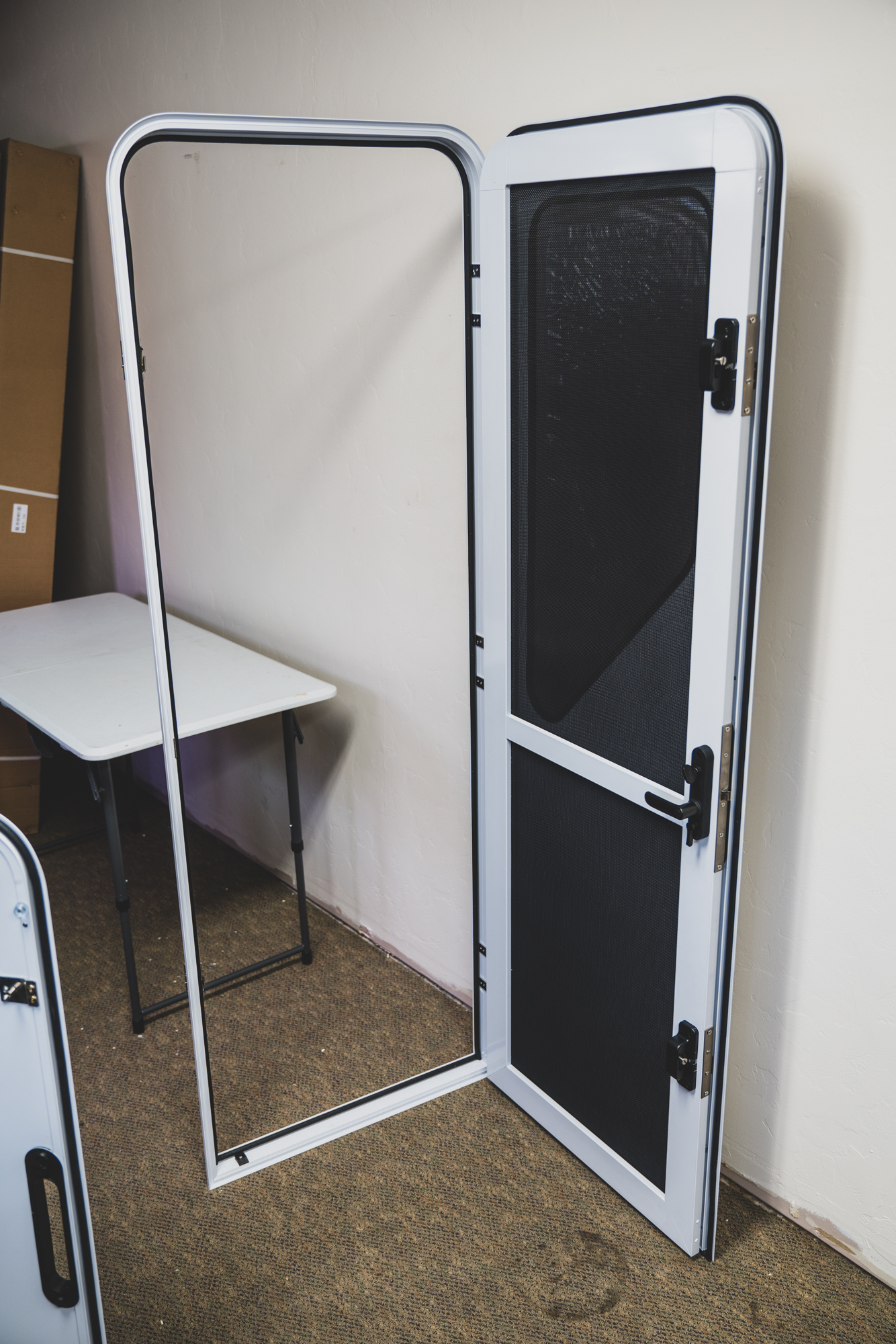
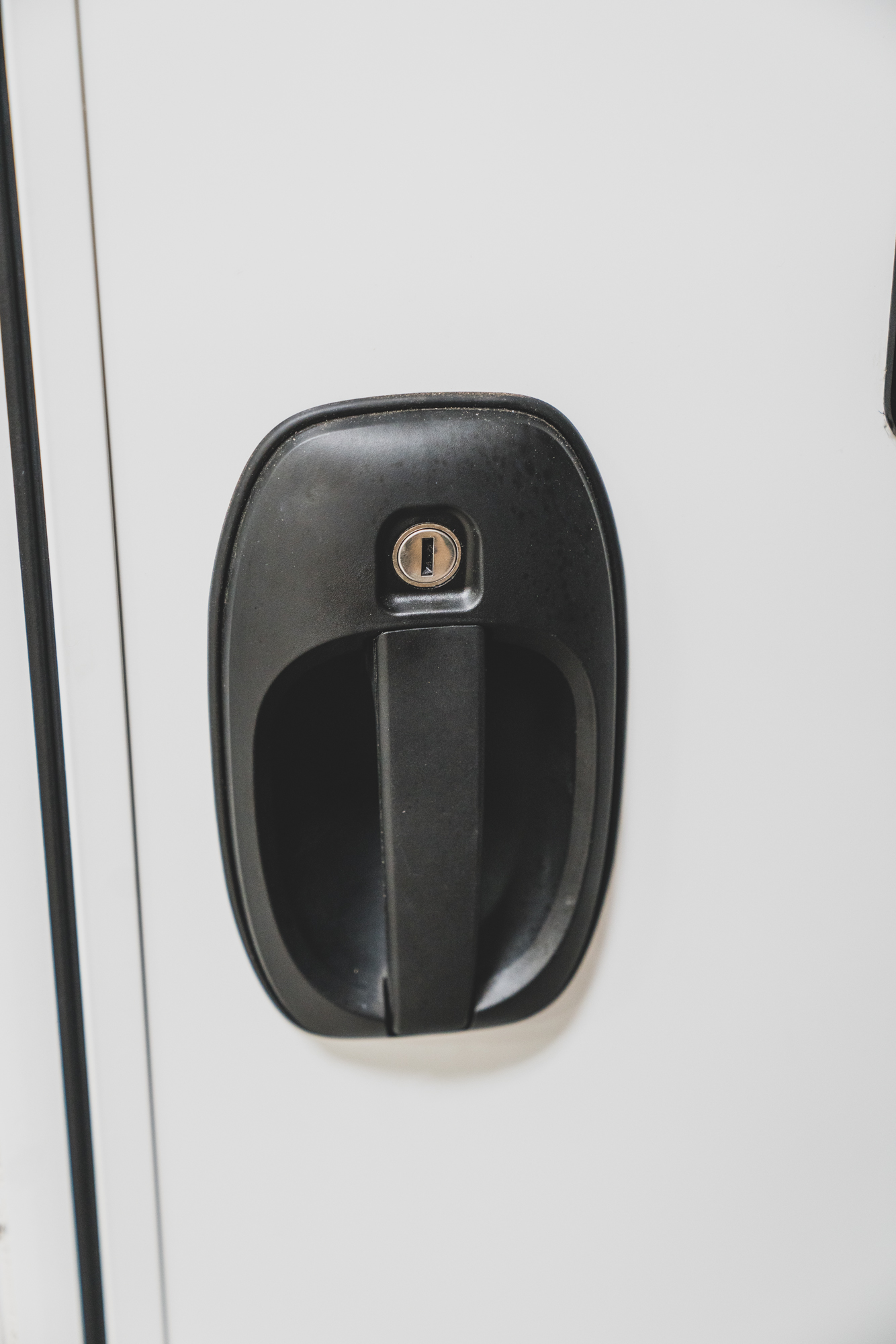
Cargo doors: The door must be flex-free, and supported by heavy-duty hinges with stainless steel pins (not piano hinge). Cargo doors should have at least double seals to keep dust out. Heavy-duty latches, in sufficient numbers, are required to keep the door tightly sealed over rough roads.
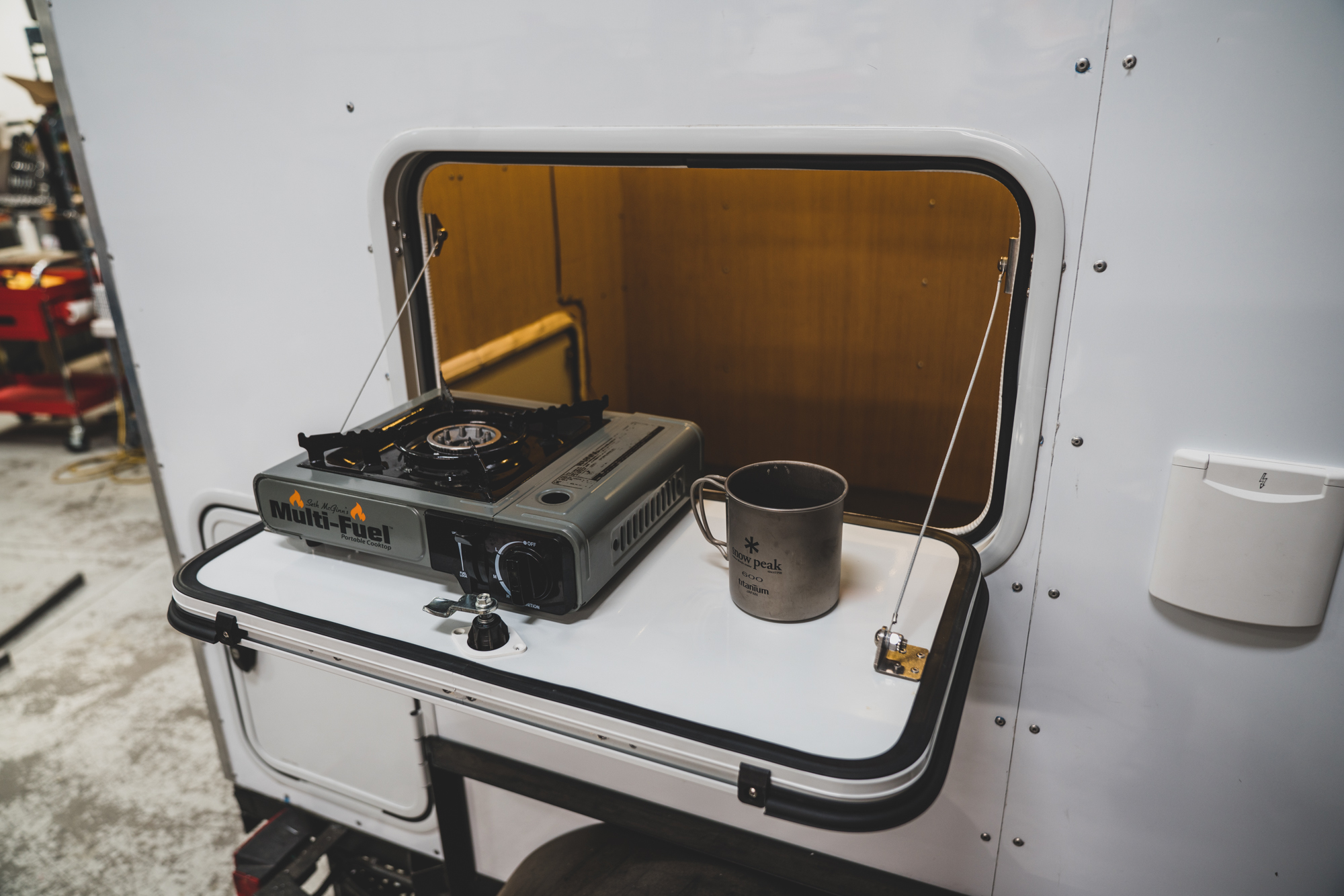
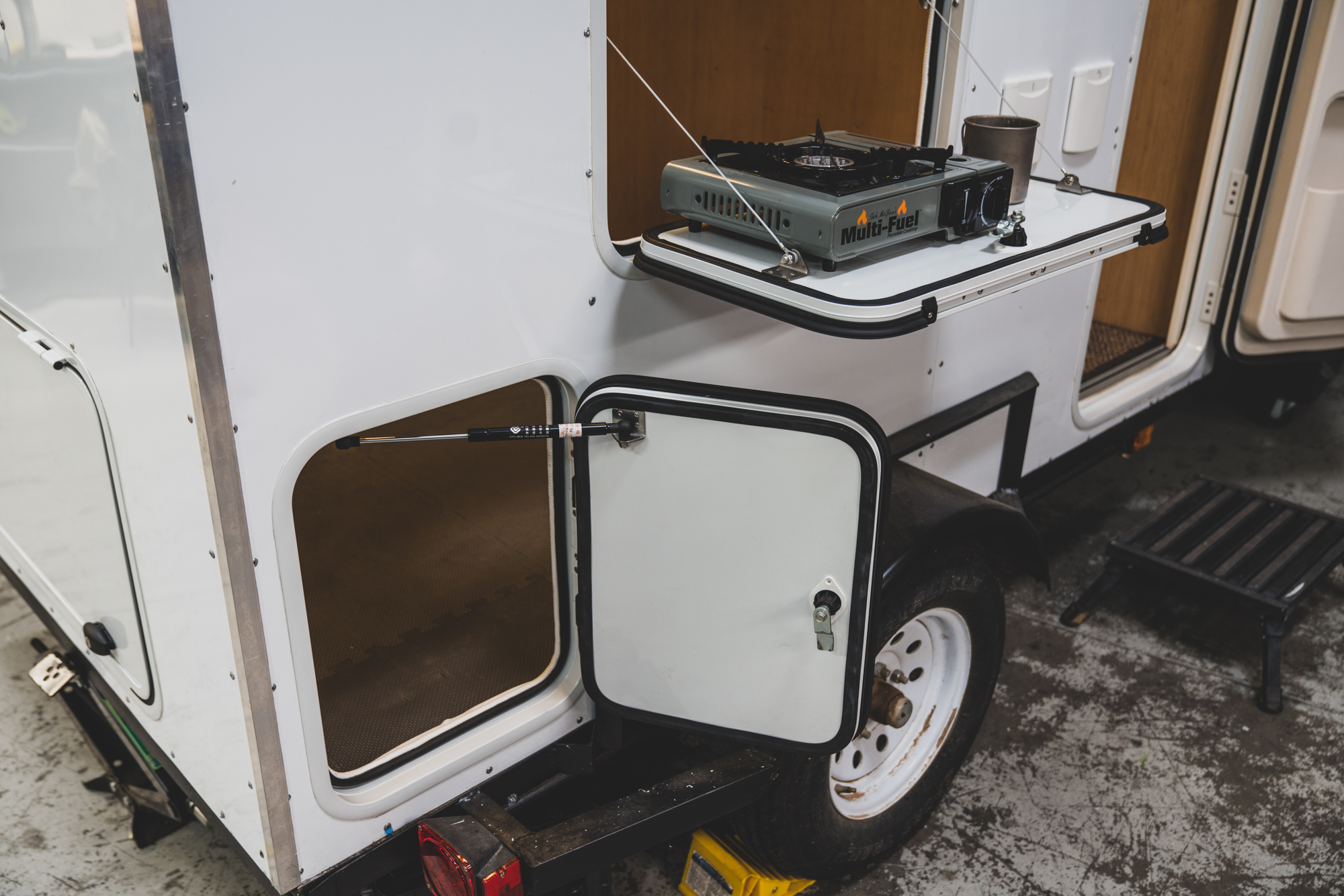
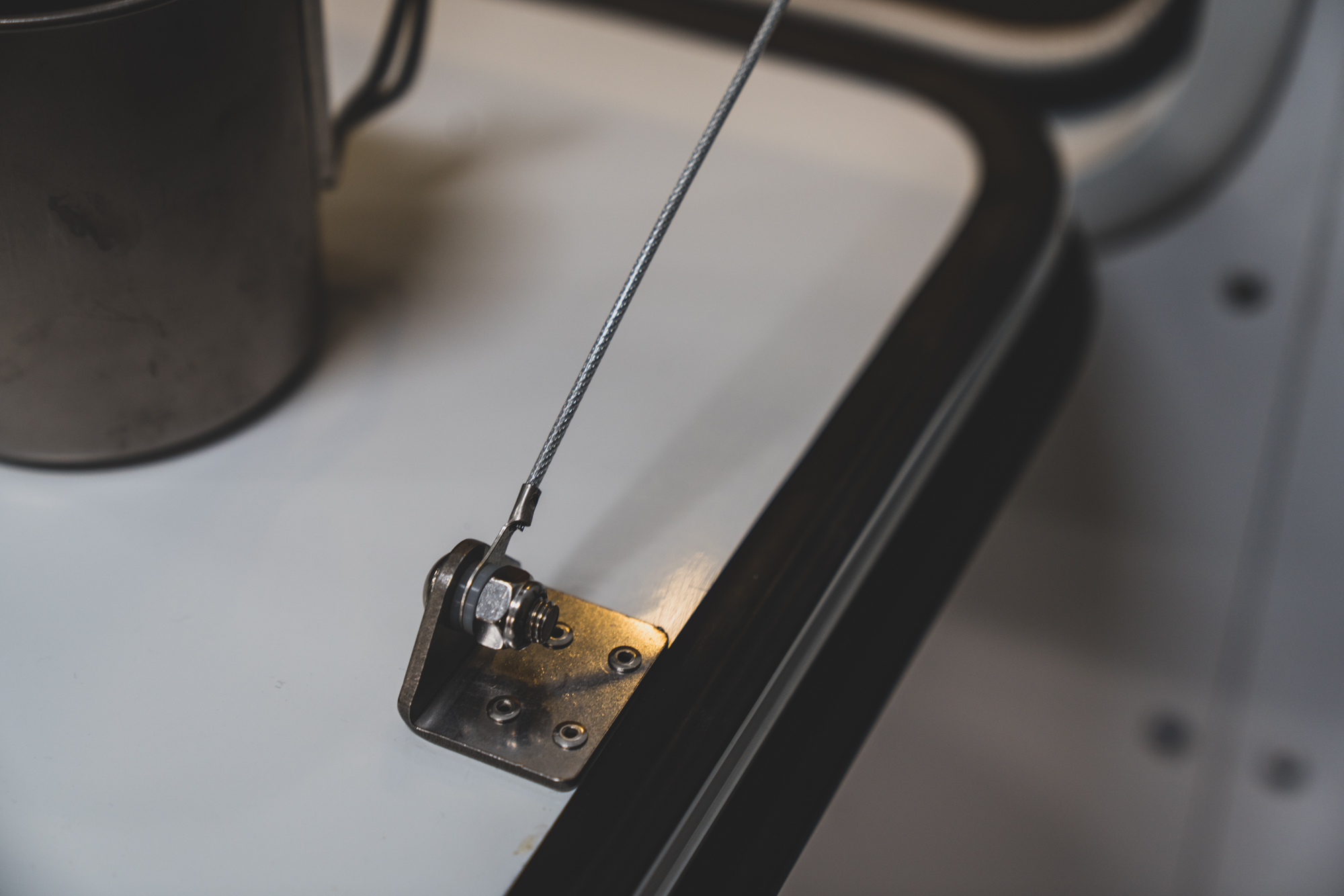

Windows: Look for an awning style. The reasons are simple. You get some degree of weather resistance when the window is open. You get 100 percent of the window size available for ventilation (sliders are 40 percent at best, many window designs are even less). For many good reasons, I will NOT put a glass window in an overland camper. I will only use acrylic. Sturdy aluminum frames stand the test of time. Plastic frames do not. Pay special attention to the quality of the blind and screen assembly if supplied. Look for aluminum construction in the housing and especially in the roller. Plastic rollers will sag over time and leave the screen loose. Look for fine mesh screen and positive sealing all around the screen and blind. Many blinds allow bugs around the edges very easily.
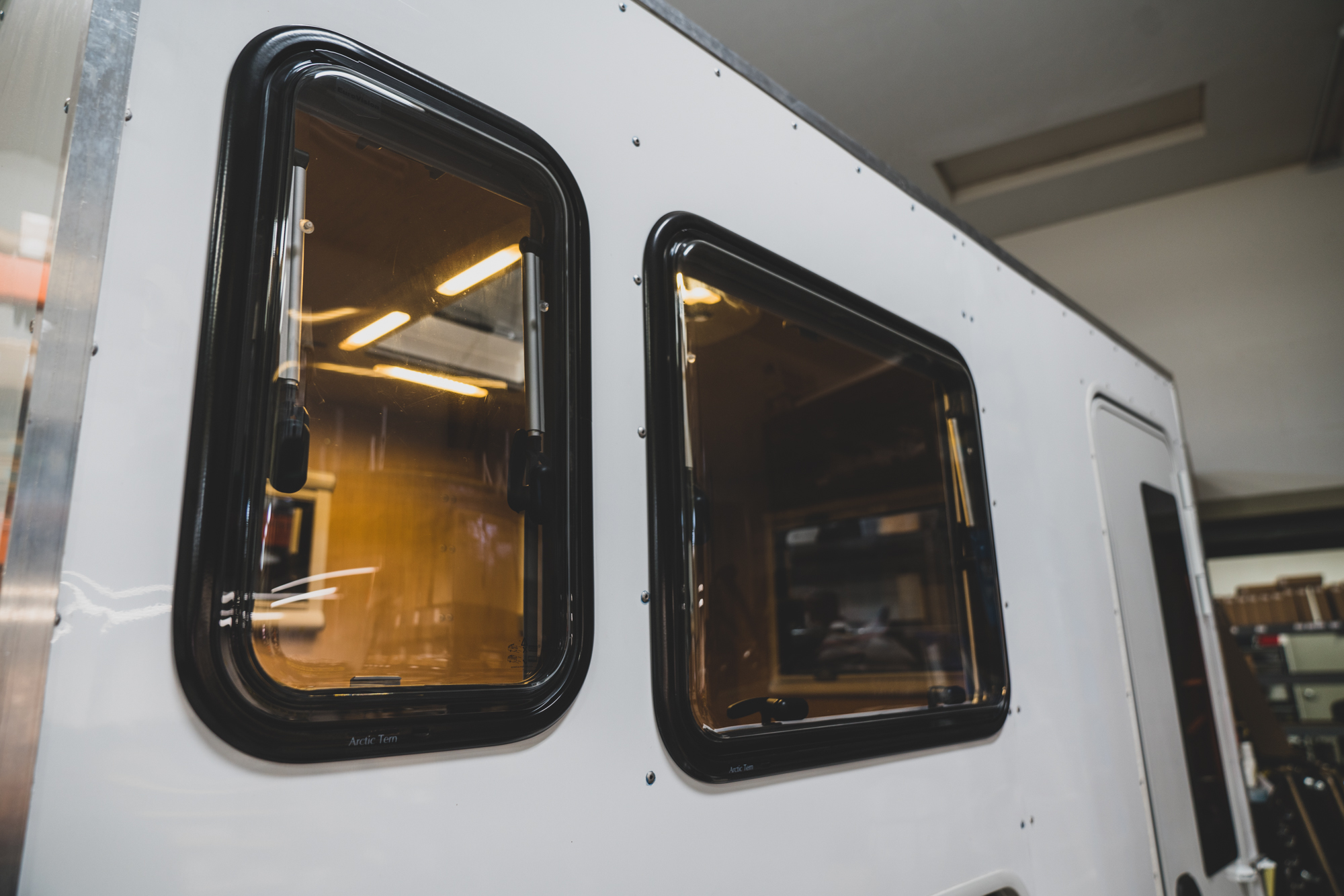
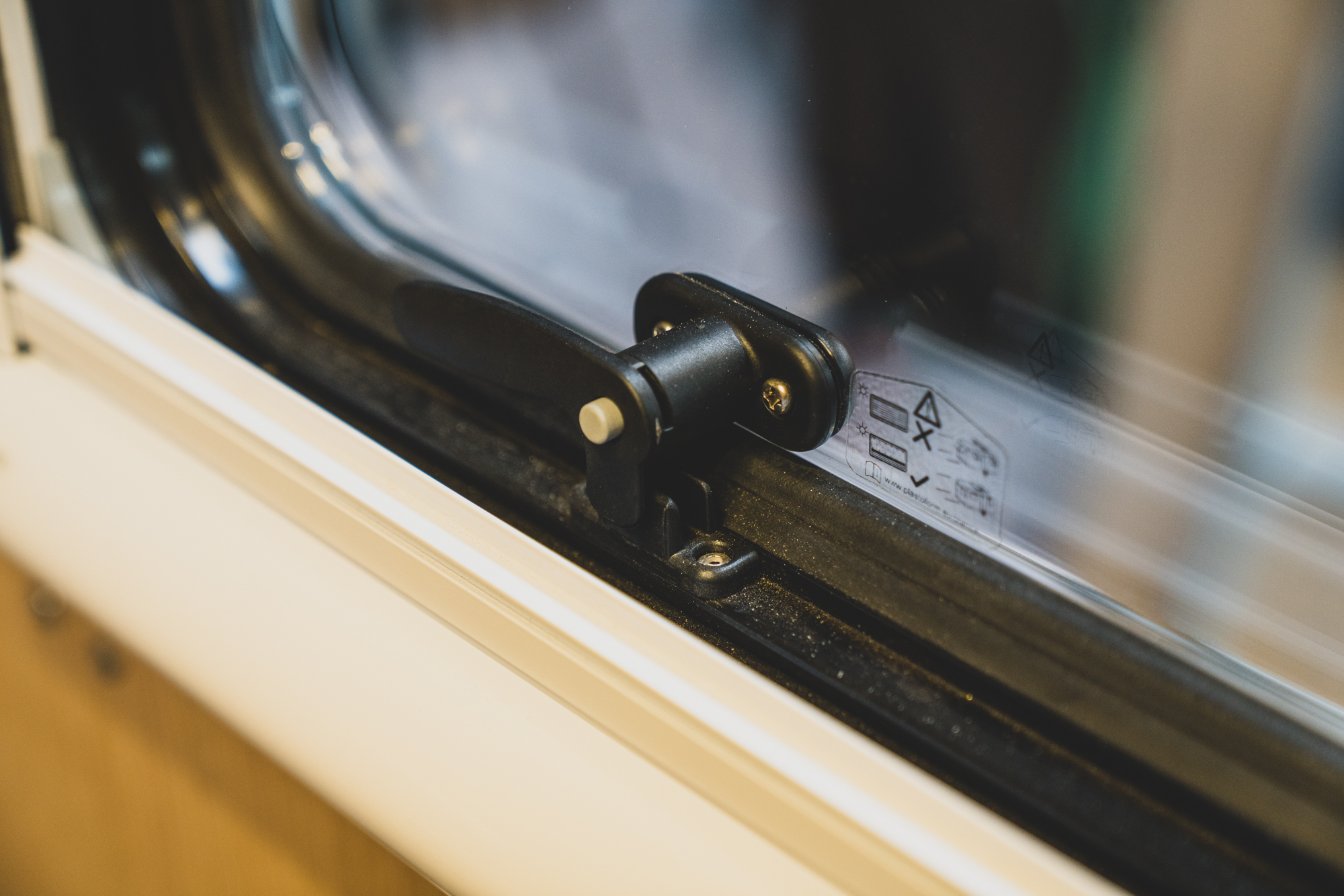


Scott: I have always wanted to know more about acrylic in windows. Coatings, scratch and break resistance, repair and serviceability, along with how to fix scratches.
David: Acrylic Versus Glass
We believe that acrylic is a great choice for RV and overland window use. Here are some facts that will help you decide which is best for you.
Glass weighs 2.14 times more than acrylic. This will matter if you are building on a weight budget. Double-pane glass gets very heavy. Acrylic is 5.25 times more thermally efficient than glass. That’s why glass condenses water and acrylic does not. The thermal penalty for having larger windows in acrylic is far less, and you get the benefits of greater airflow, light, and view. The 5.25-times advantage is when comparing single panes of both materials. The advantage of our double-pane windows over single glass is over 10 times. Acrylic is 17 times more impact resistant than glass. Of course, double pane windows are even higher, since the outer pane will absorb most of the impact energy. This will usually leave the inner pane intact. A mishap in the Outback is far less likely to leave you with a gaping hole in your rig. Acrylic also does not shatter like glass, making it safer.
Acrylic transmits 92 percent of light while glass transmits 80 to 90 percent, depending on composition. Typical safety glass transmits 85 percent. This means a brighter interior, depending on tint. Acrylic has a flexural strength of 2-3 times higher. This makes it possible to build larger awning-style windows without a frame around the glazing, saving even more weight. Acrylic does require reasonable care to prevent scratching, but all but the worst scratches can be polished out. In every other way imaginable, acrylic is a better material than glass for an overlander window. A common misconception is that acrylic is “cheaper.” Actually, building a quality double-pane glazing like ours is more expensive than glass.
Glass windows cannot be field patched, but acrylic can be solvent welded. Crude field repairs on acrylic are easy if you carry a piece of repair material and a tube of solvent weld cement.
Regarding coating: Typical acrylic is not coated because it is already a fairly hard material. Coatings are typically used on polycarbonate glazings because polycarbonate is much softer. The downside to coatings is that once you polish through the coating, the material is ruined. Uncoated acrylic can be polished and re-polished since it is the same hardness all the way through.
Scott: For the DIY van (vanlife), what are the critical considerations for windows?
David: Of primary consideration is fit of the windows in panels provided by the manufacturer. It is important that the window is mounted at least 3 inches away from any major support beam on the side, and 1-1/2 inches away top and bottom. This is to allow proper conformity of the metal van skin to the window. The windows require a minimum of 1-inch wall thickness to properly install. In most cases. A 1-inch-thick wooden or aluminum spacer must be fabricated to fit between the window frame and the skin of the van. We provide complete instructions on this process.
Before determining which windows you want, it is best to know how your wall will be finished out ( insulation, interior paneling, etc.). There are a number of ways to accommodate different wall construction.
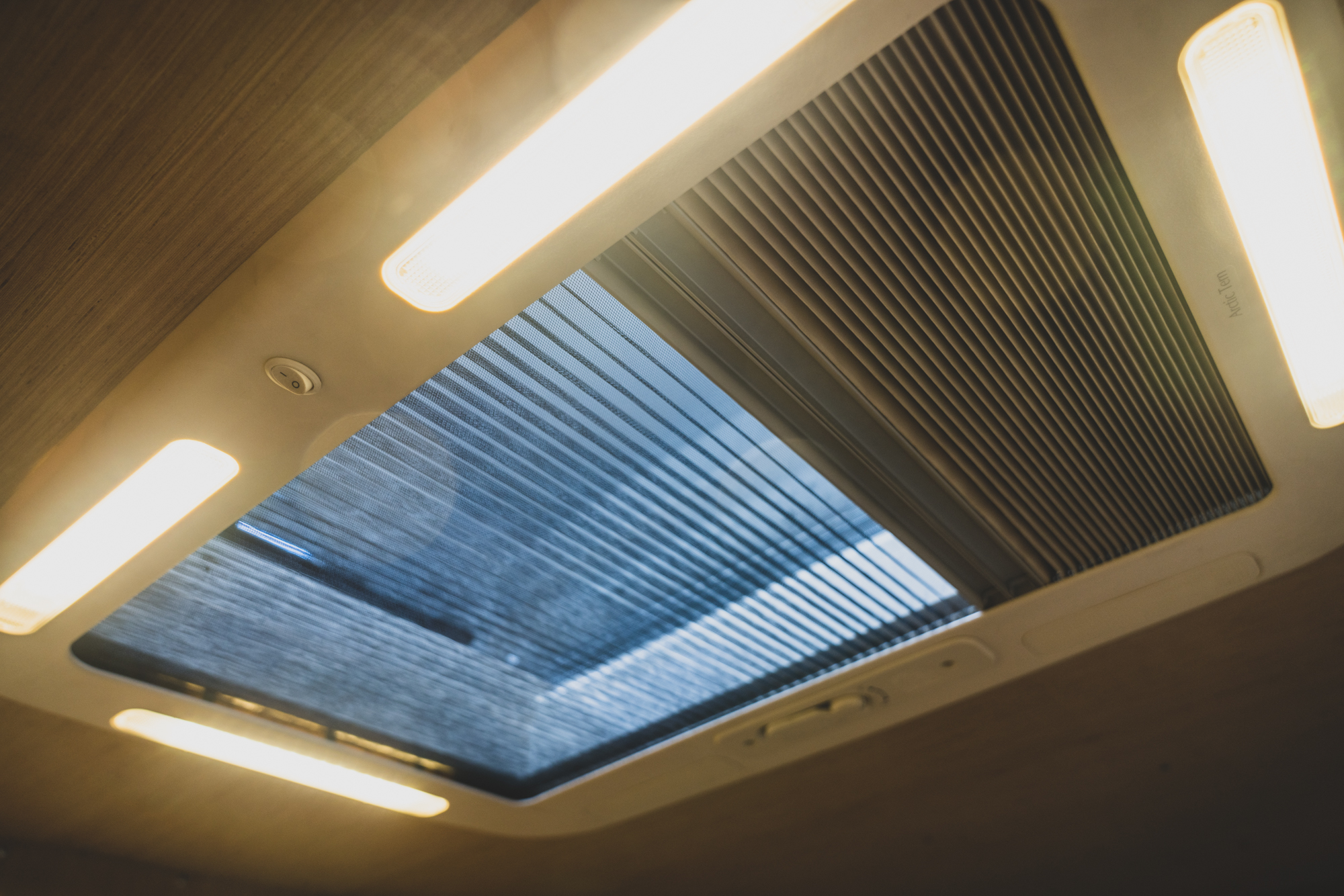
One of the more interesting products is their new trailer door for teardrop and lifting-roof overland trailers. These doors were specifically designed for durability, security, and ventilation. The mesh was chosen by David to keep out both bugs and bears.
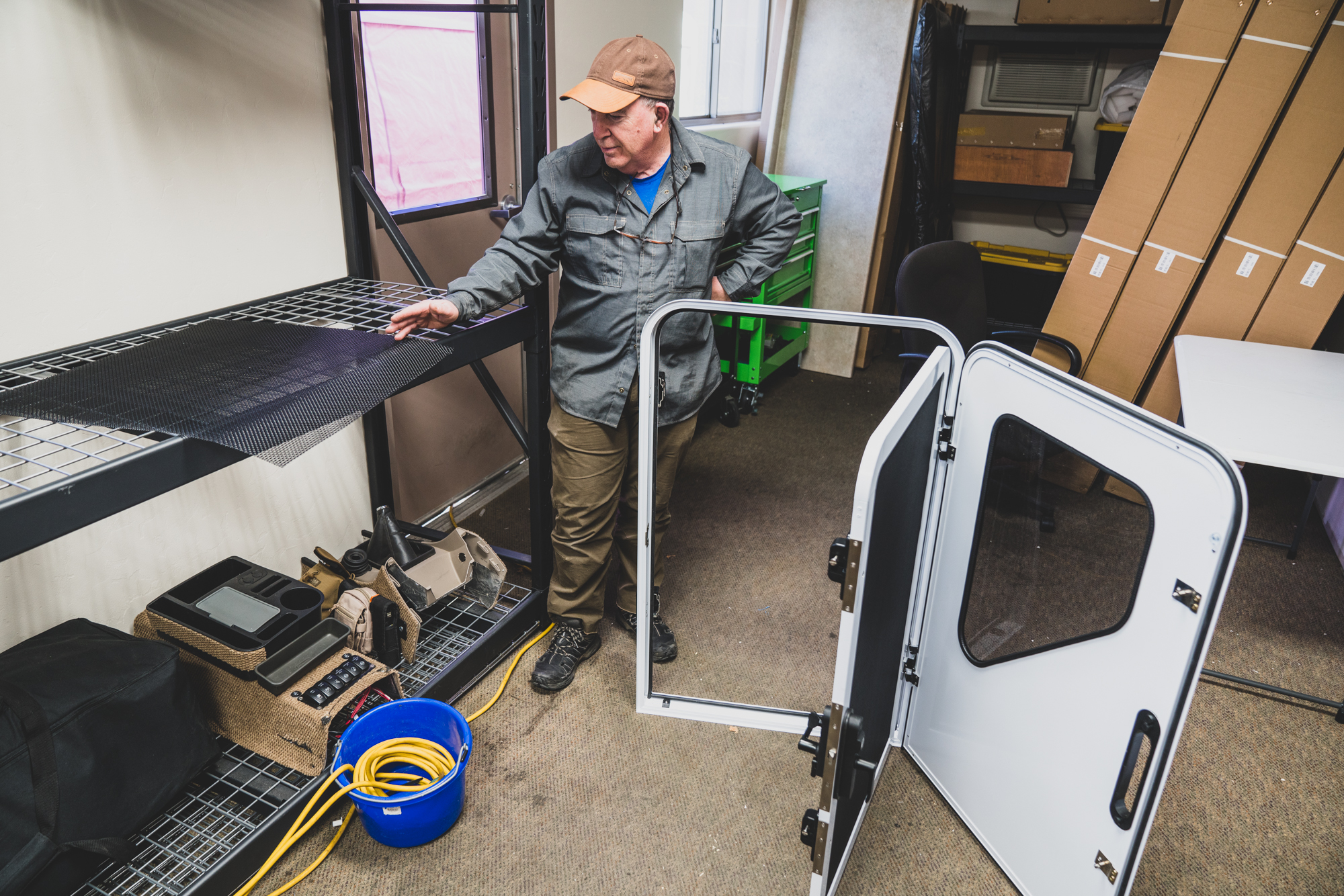
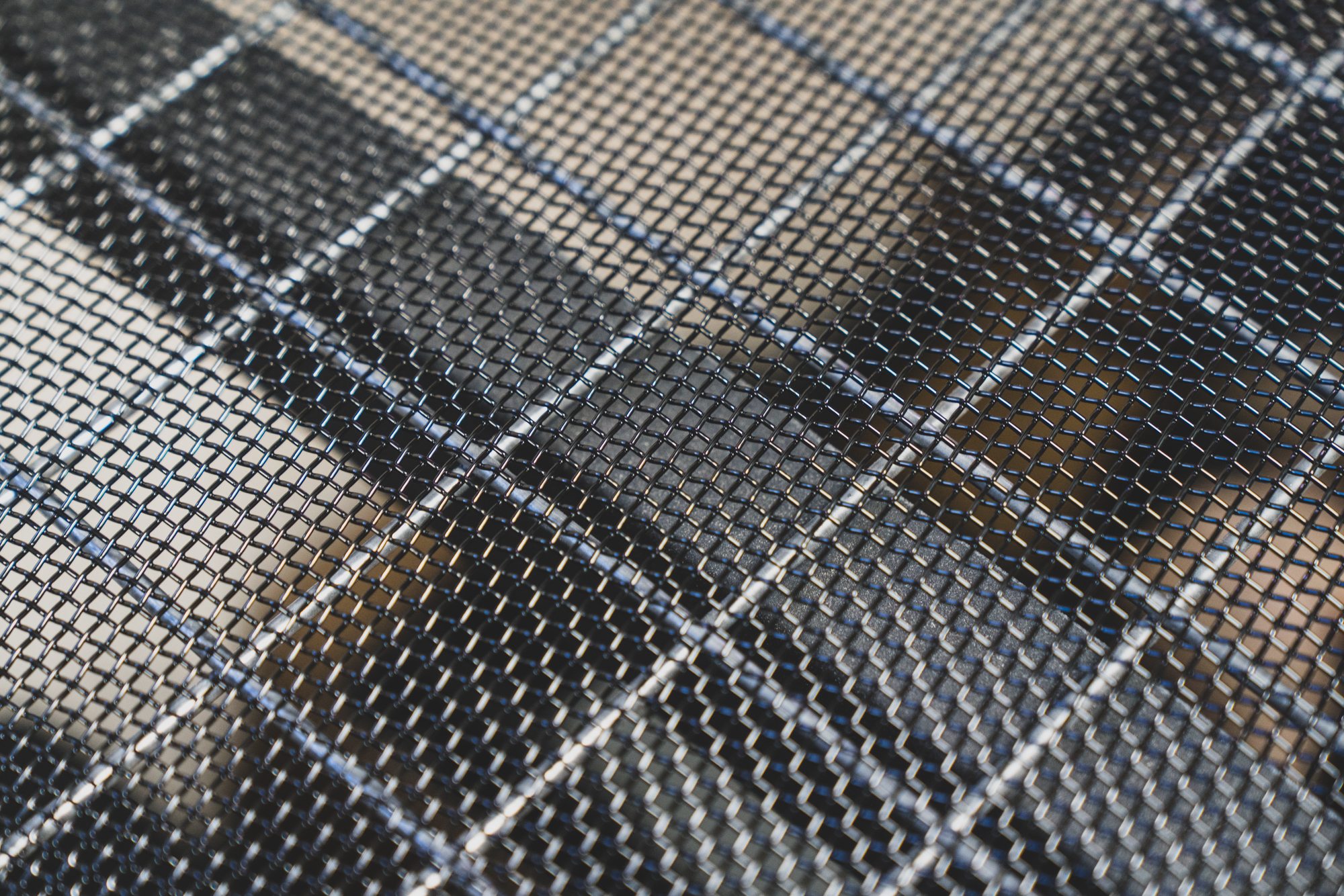
Their shop is well organized, and they have stock on hand, which means a quick turnaround for builders and DIY companies alike.
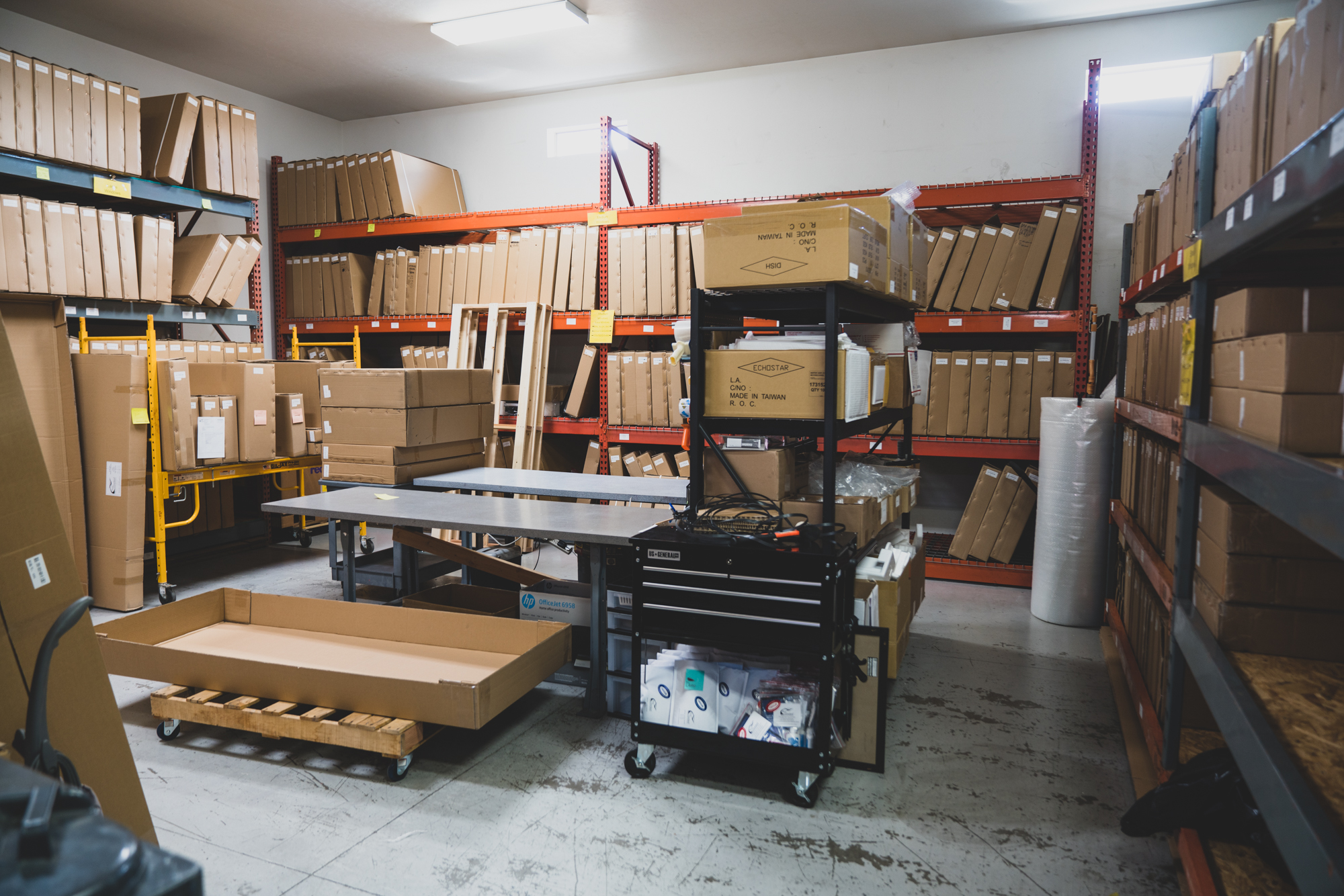
Editor’s Note: These interviews are a free service to small businesses in the community. Expedition Portal receives no compensation for running this article.


